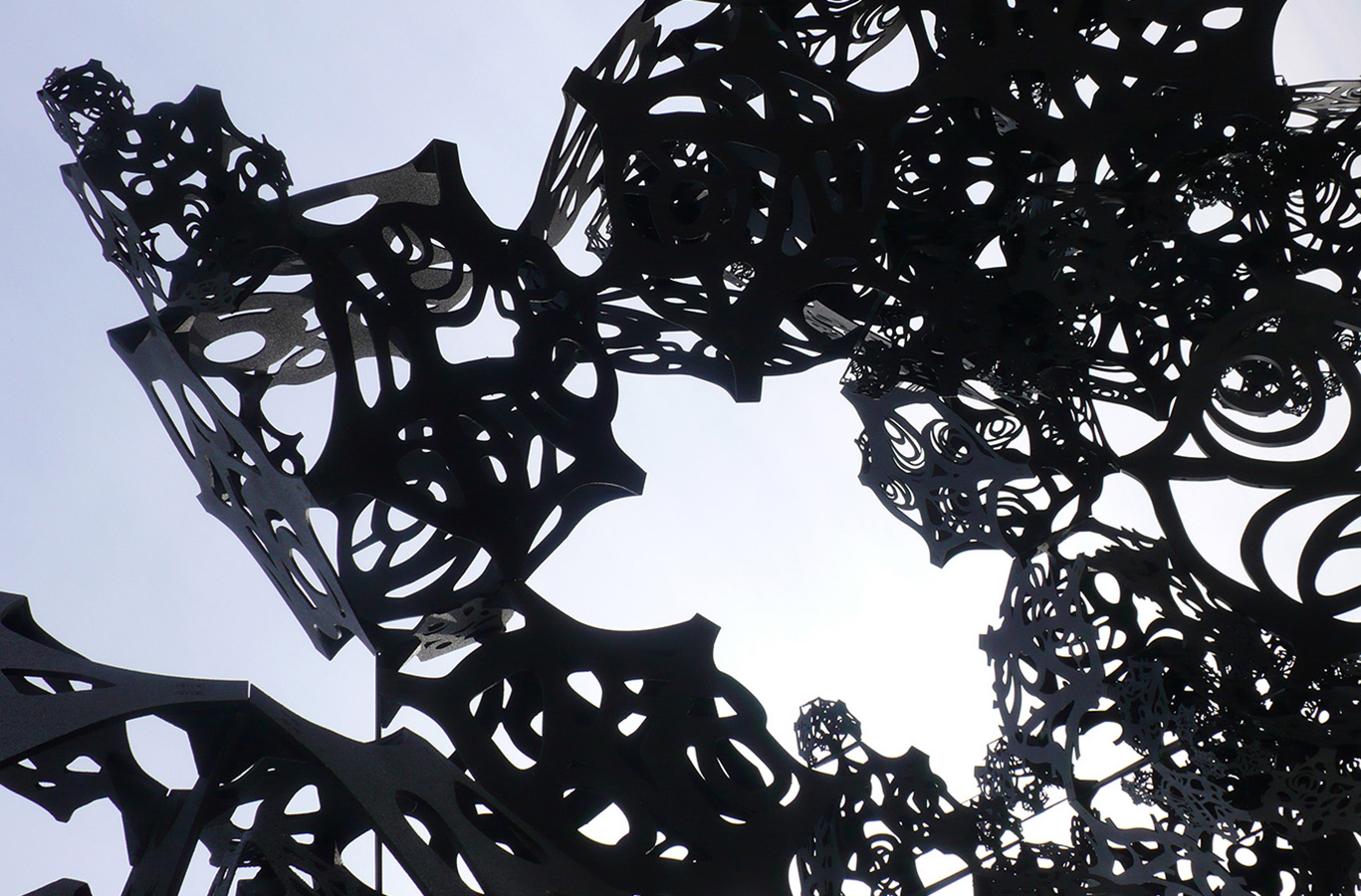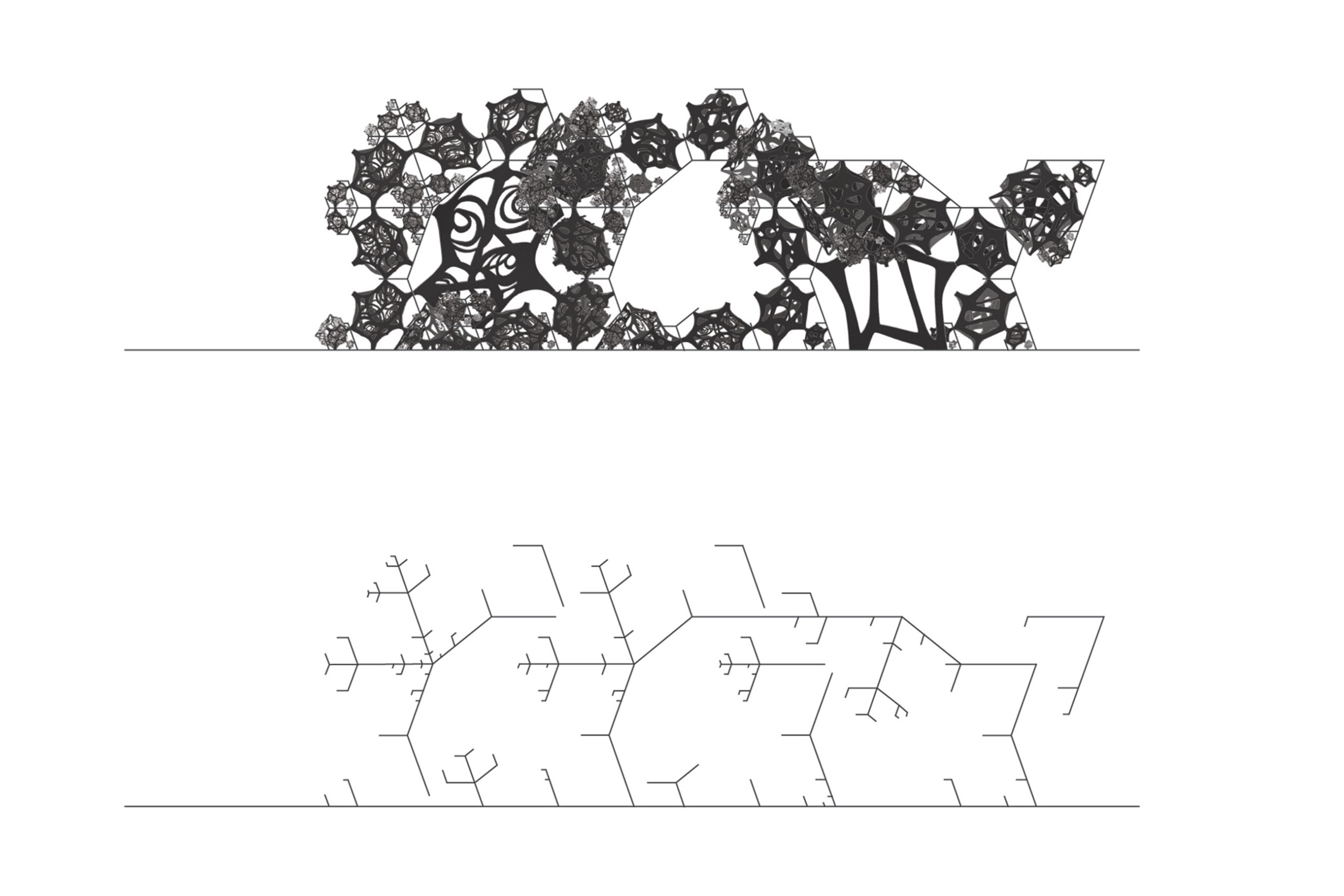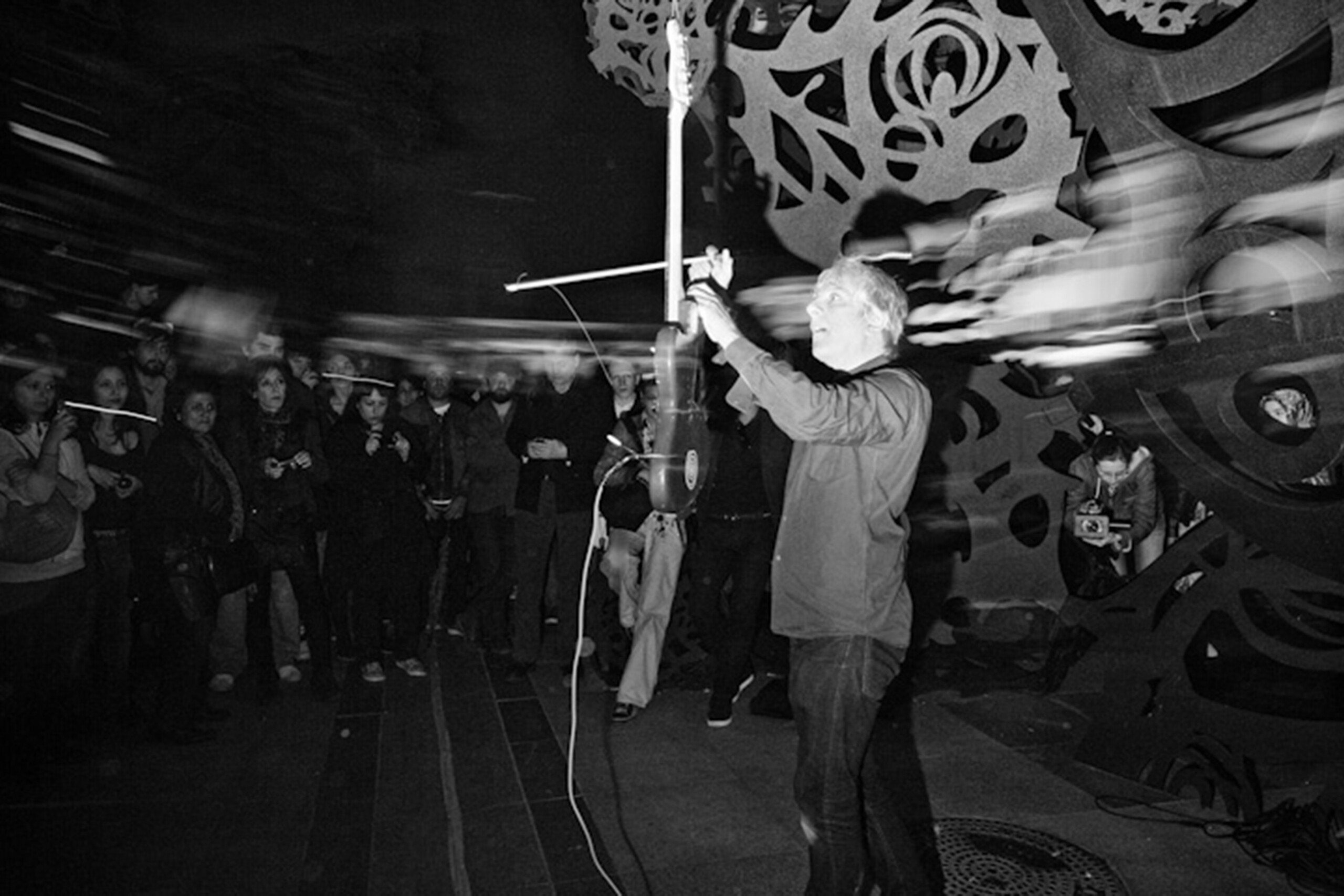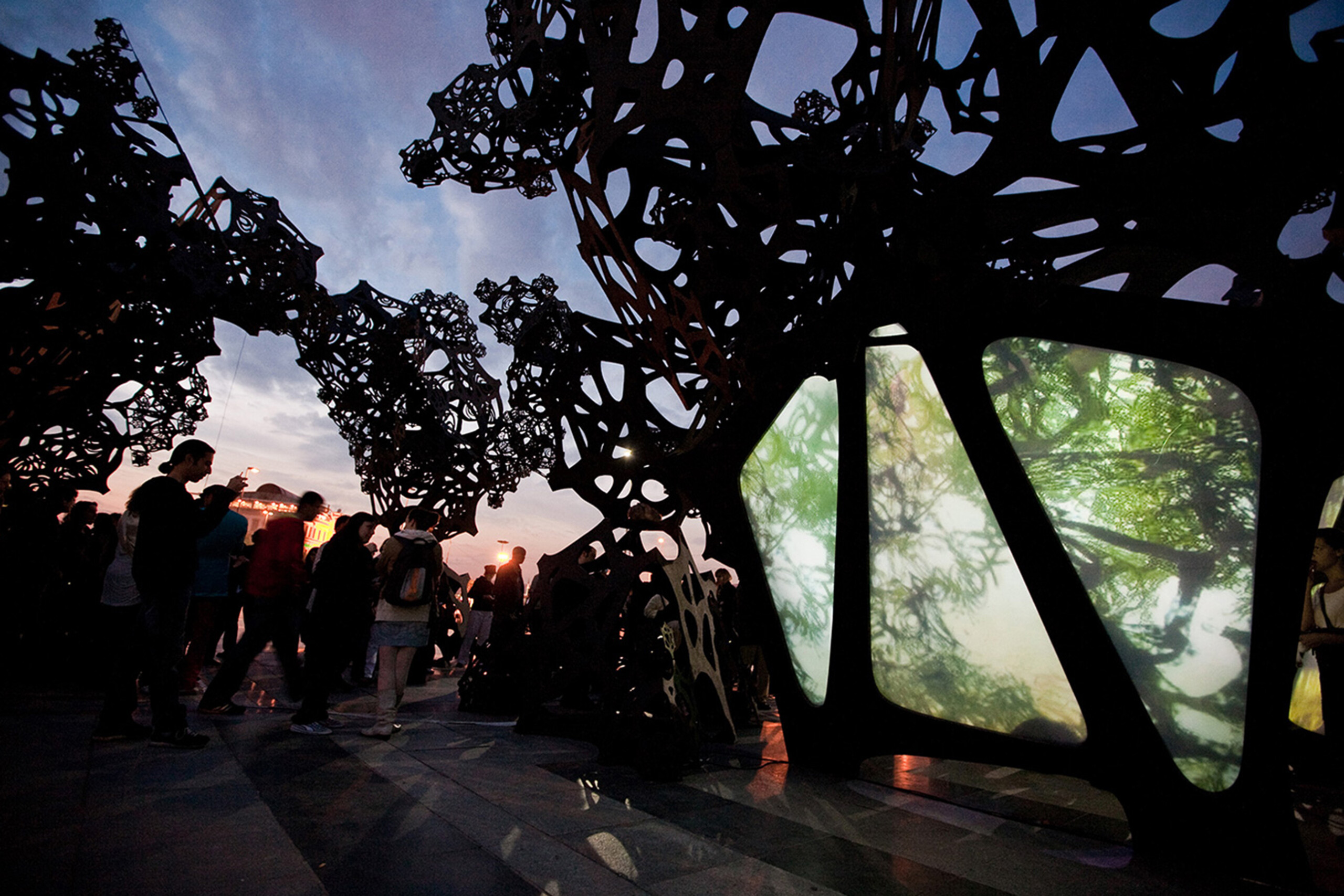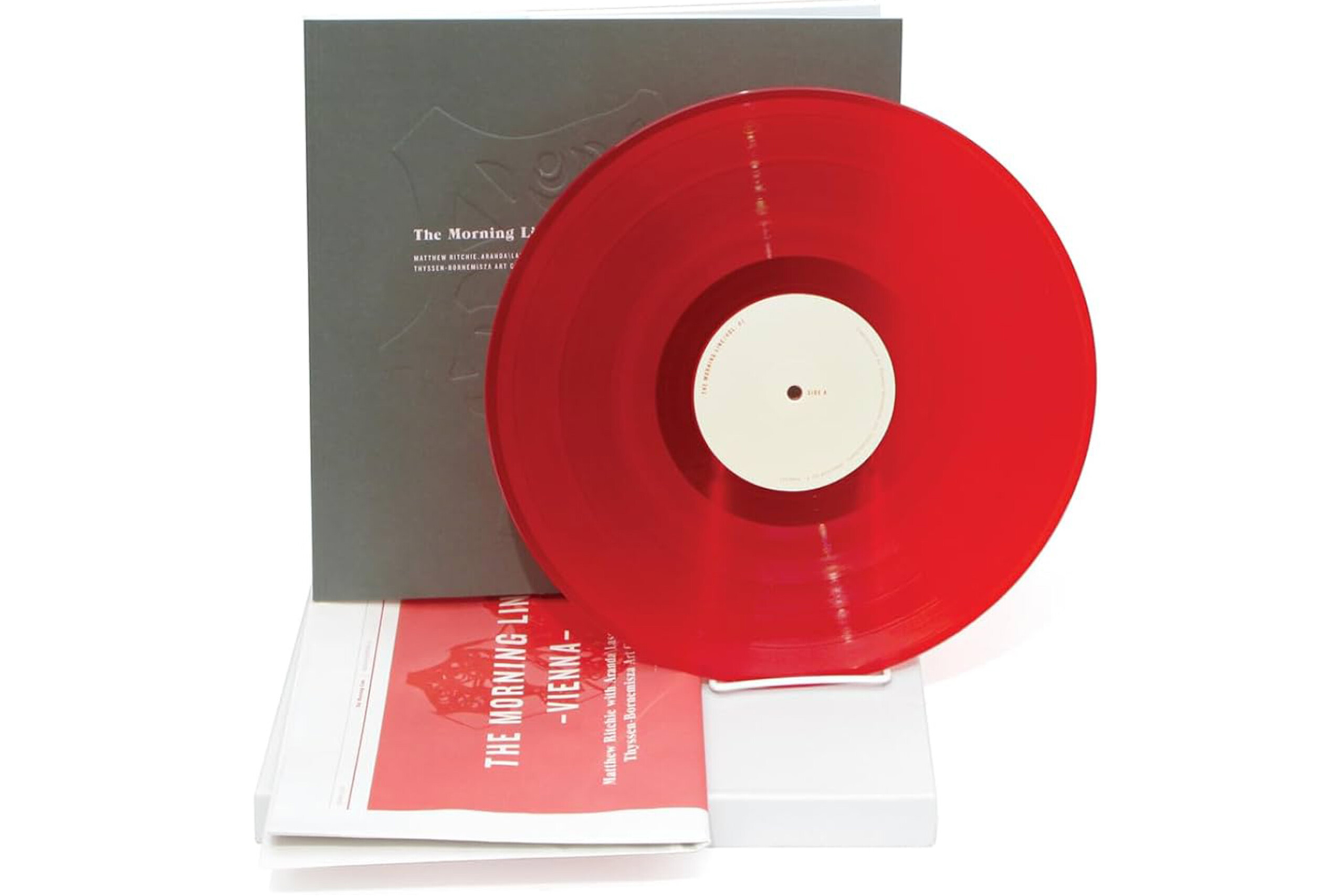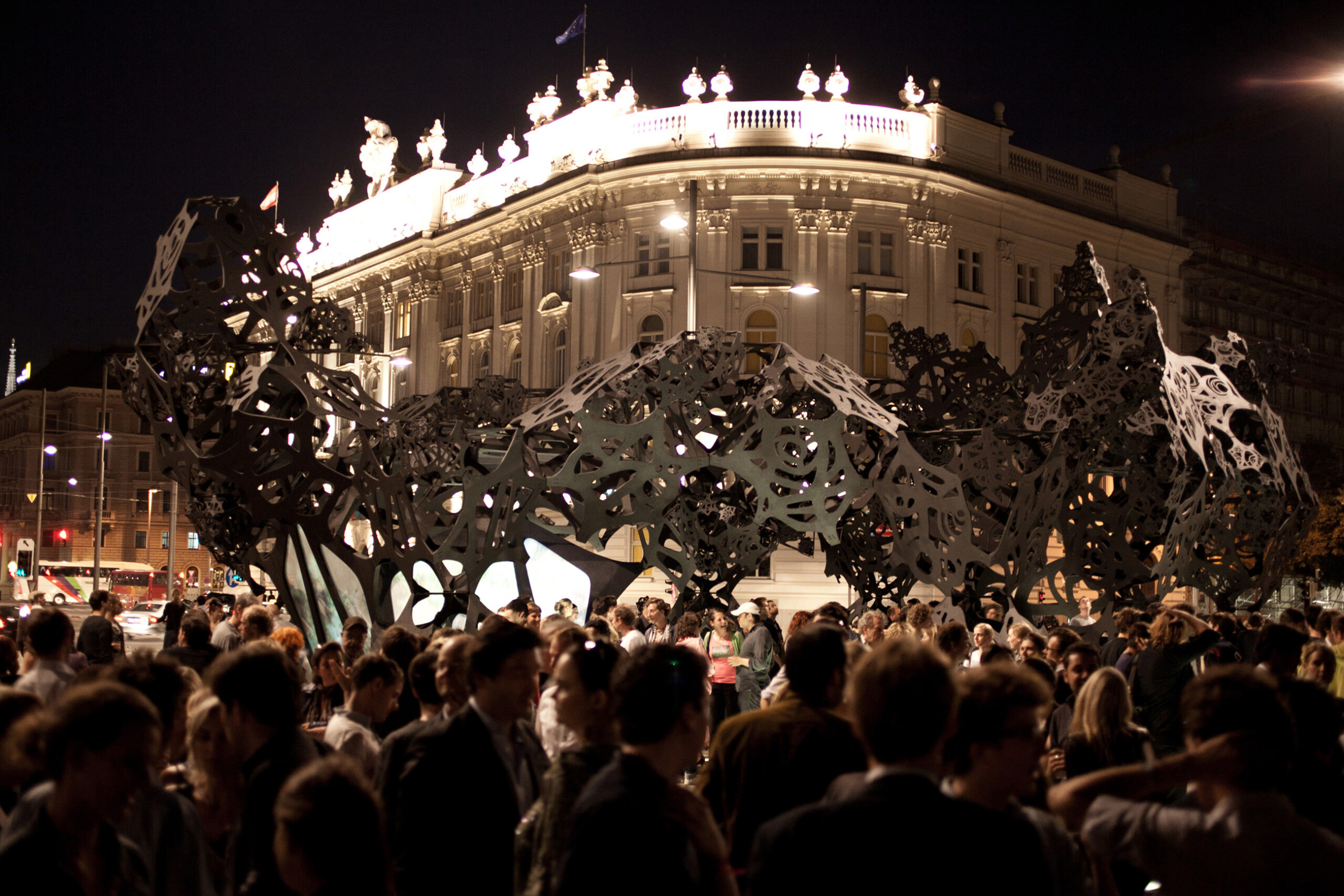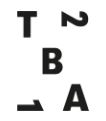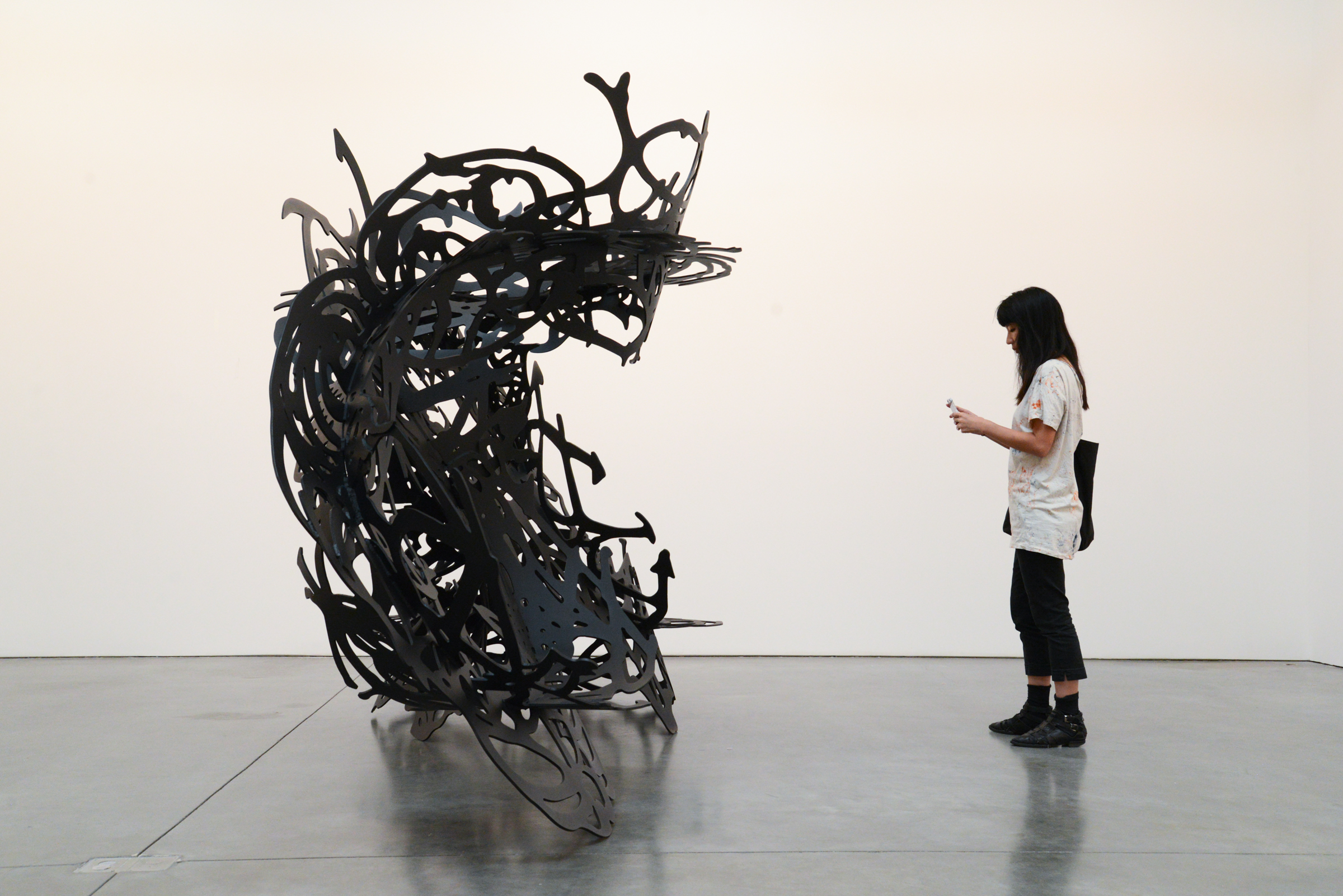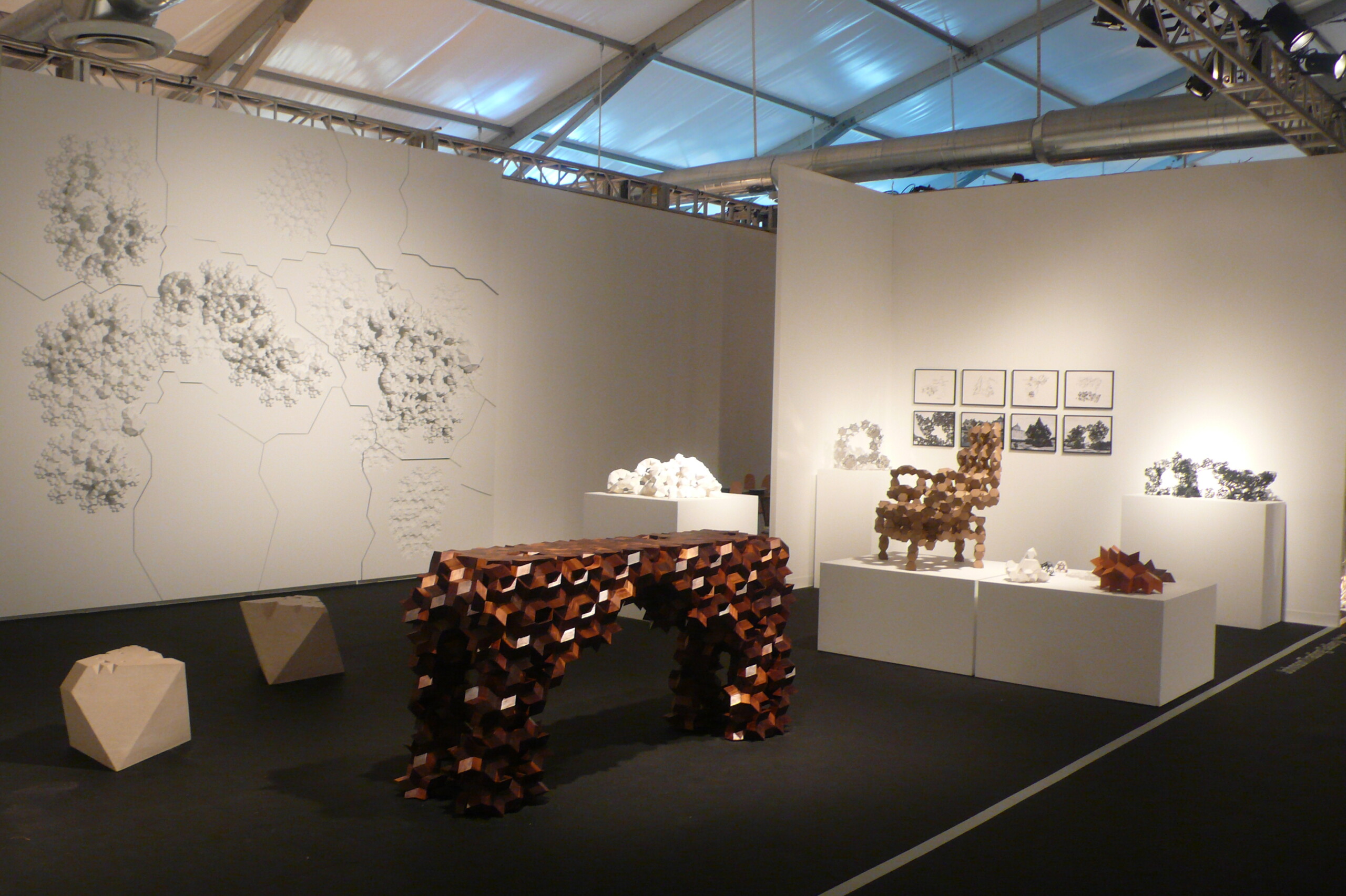This site uses cookies – More Information.
The
Morning
Line
The Morning Line, in collaboration with the artist Matthew Ritchie, commissioned by Thyssen-Bornemisza Art Contemporary, is an experimental project blending art, architecture and sound.
The project is conceived by Ritchie as a collaborative platform to explore the interplay of art, architecture, cosmology, and music. Imagined as a ruin from the future, The Morning Line is a drawing in space, where each line connects to other lines to form a network of intertwining figures and narratives with no single beginning or end, entrance or exit, only movements around multiple centers that together trace out a dense web of ideas concerning the history and structure of the universe and our place in it.


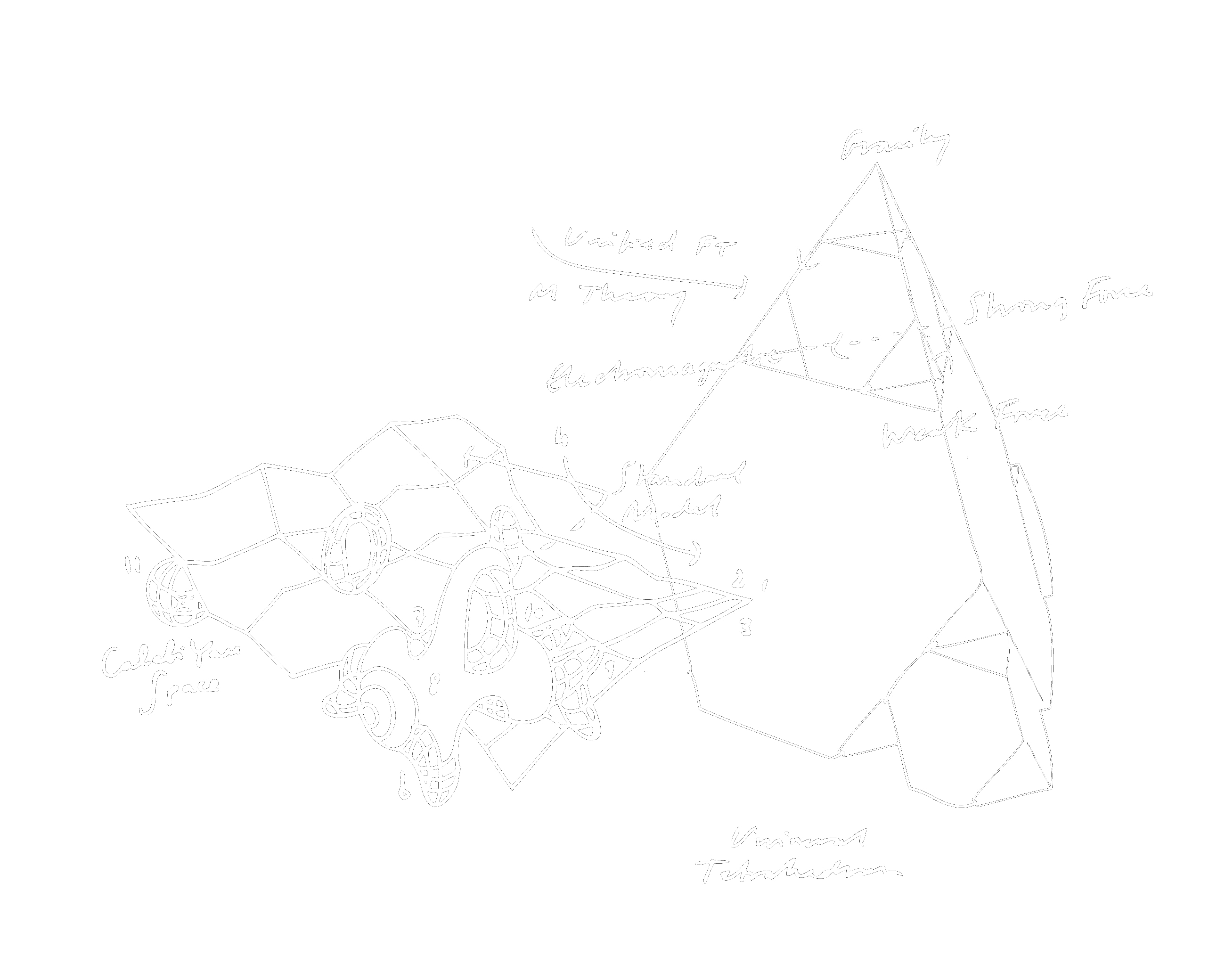
Within the drawing, other information layers animate the structure. The piece is outfitted with a sophisticated arrangement of speakers and controls designed by Tony Myatt of the Music Research Centre of York University, which transform the piece into an innovative spatialized sound environment. Over the course of the Morning Line’s installations, guest curators invite composers to produce site-specific works for each installation, treating visitors to music and sound performances that move through the space around them.

Installations
To date, the Morning Line has travelled from Seville, Spain (2008) to Istanbul, Turkey (2010) to Vienna, Austria (2011), constantly adapting its form to its new site. It is currently in the permanent collection of the ZKM in Karlsruhe Germany.
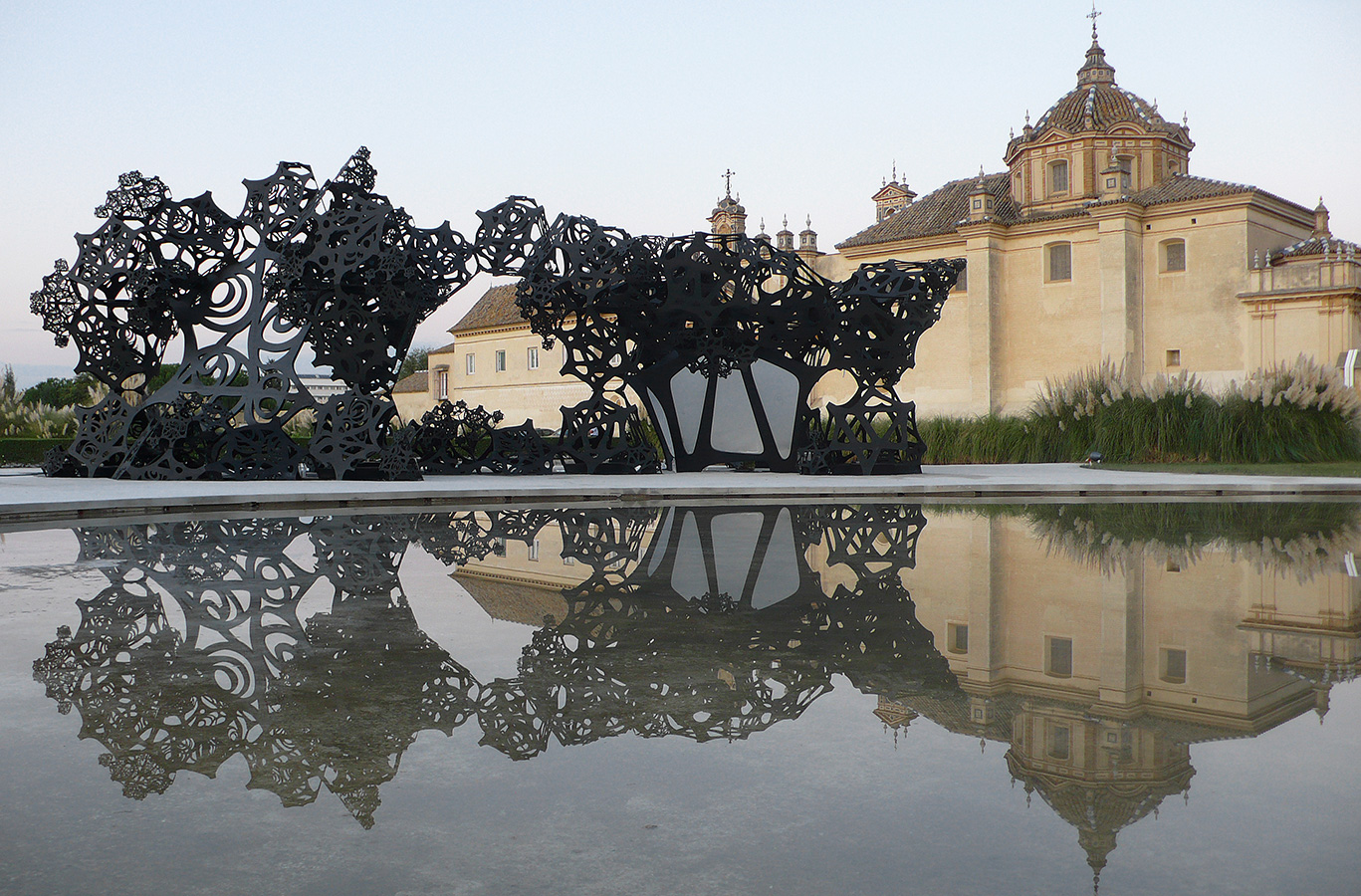



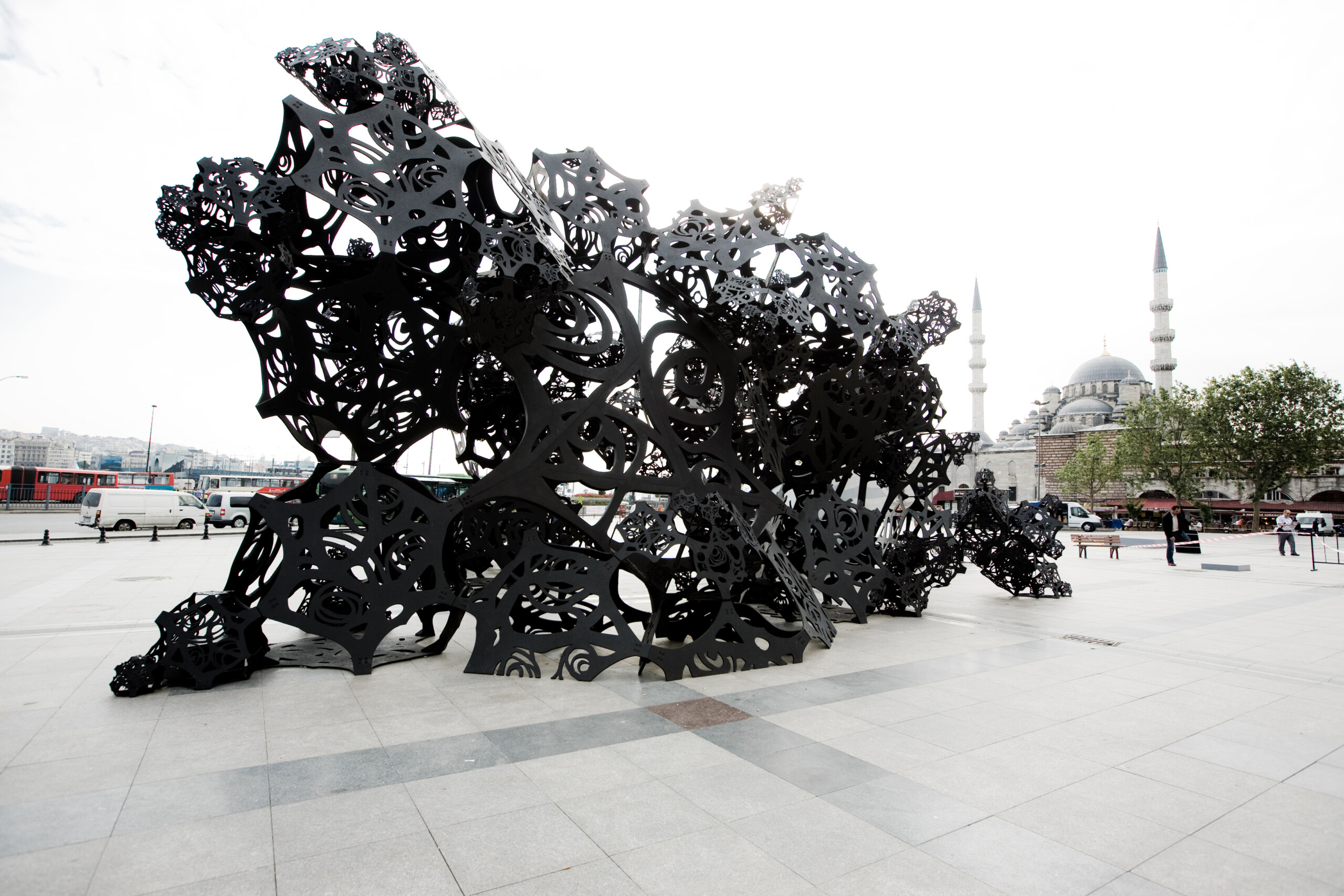

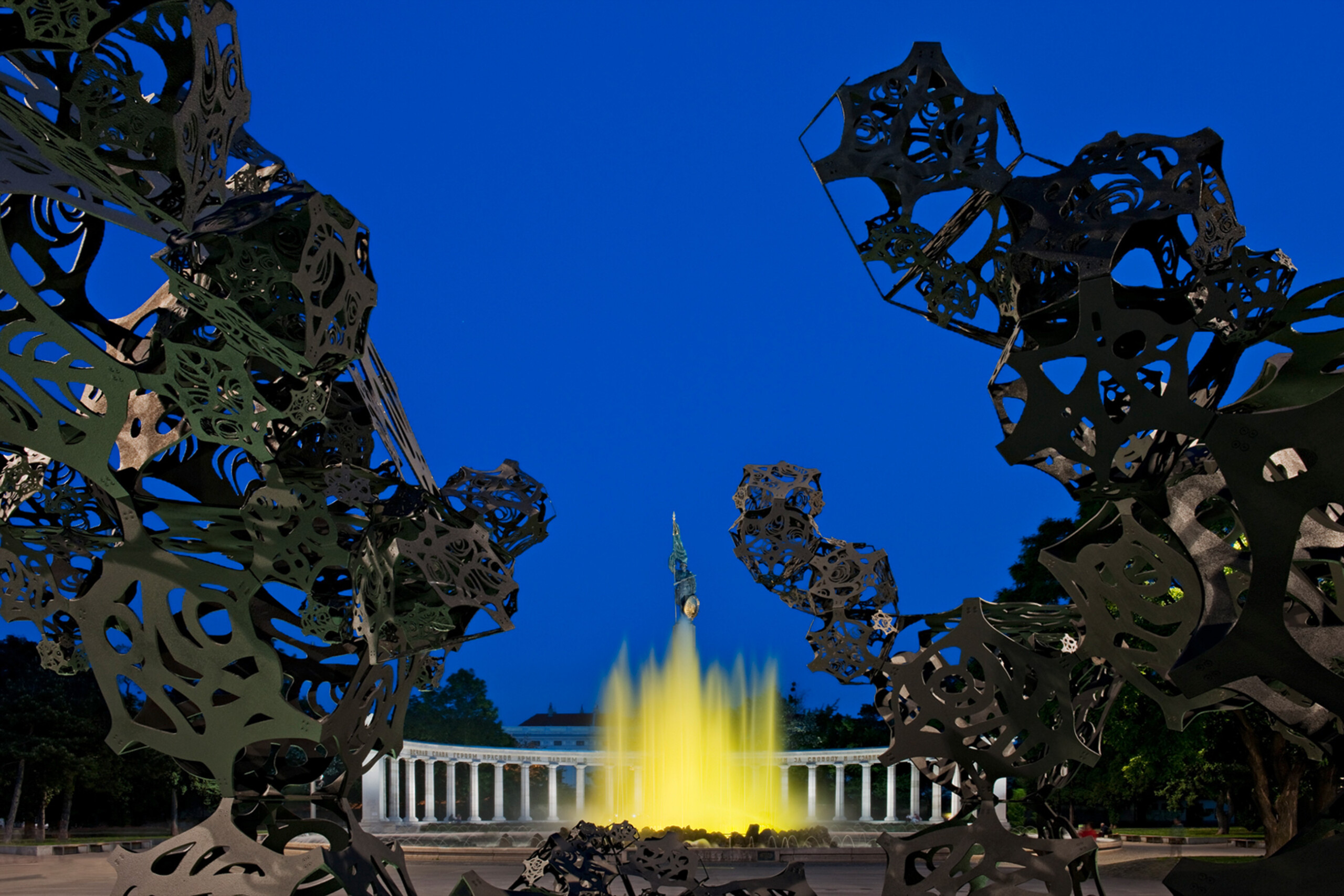




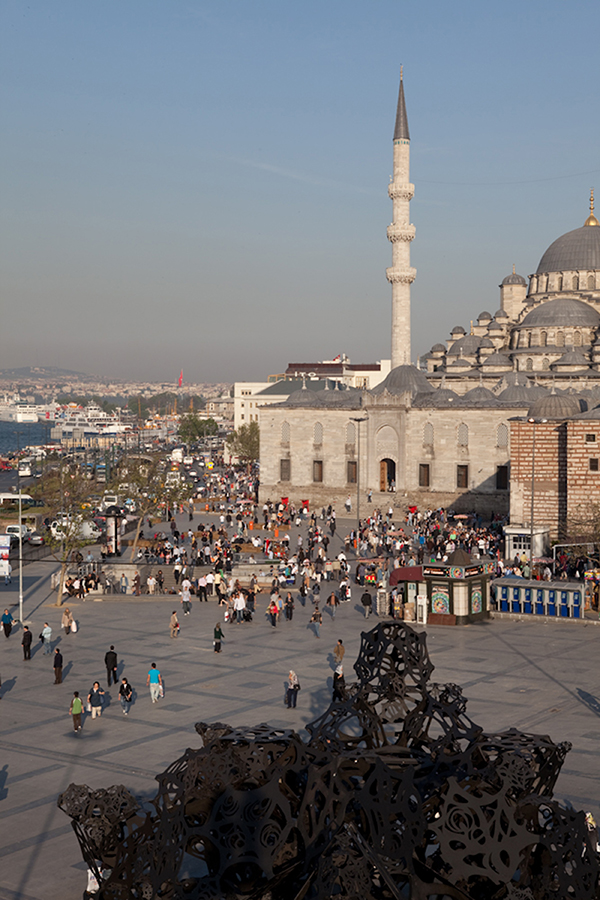
Drawings and Models
At the heart of the Morning Line is “the bit”. A fractal building block that grows and scales by a fixed ratio in three dimensions to produce the lines, spaces and structure of the piece. Each bit is interchangeable, demountable, portable and recyclable, allowing the piece to change and adapt physically over time along with its sonic content.


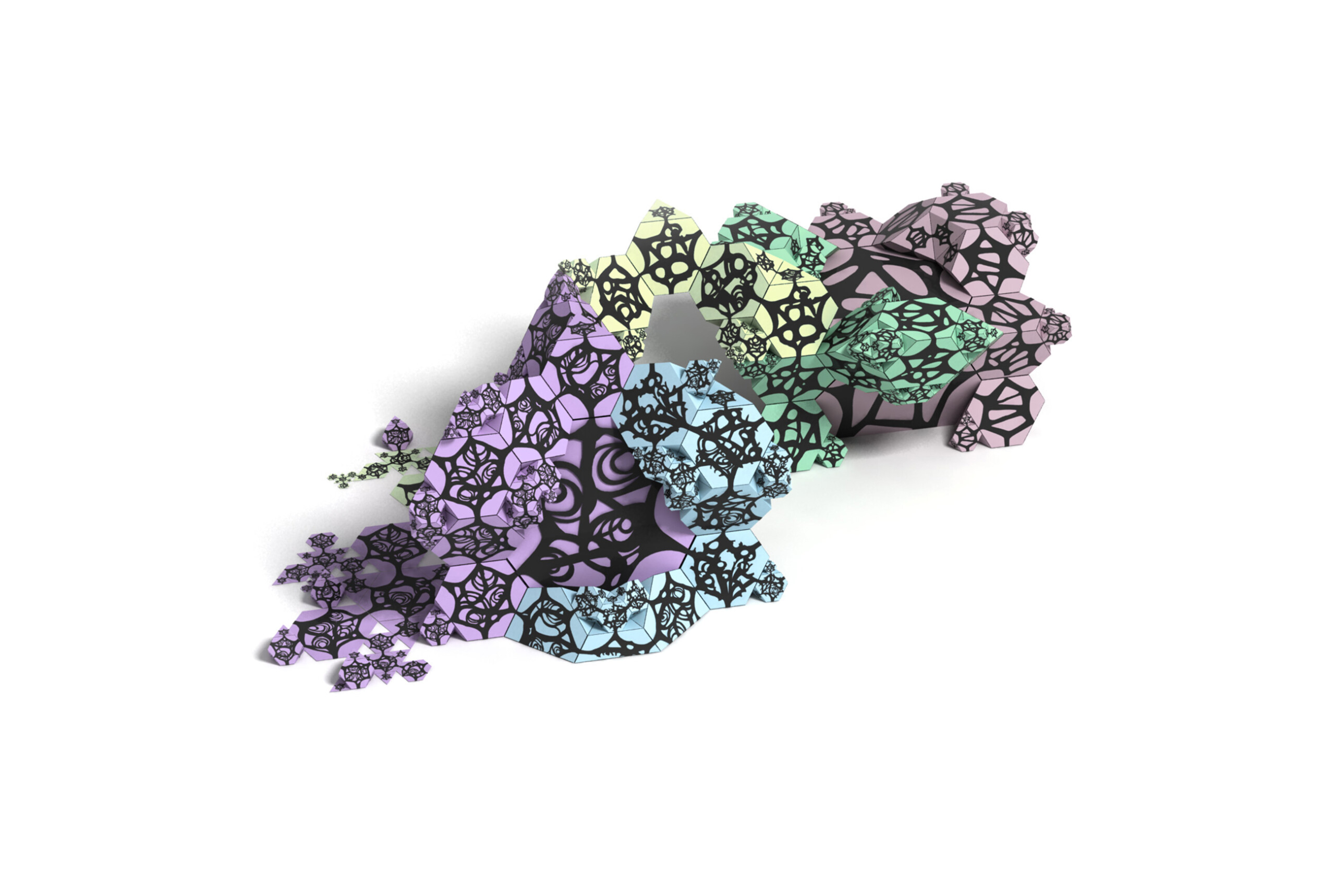

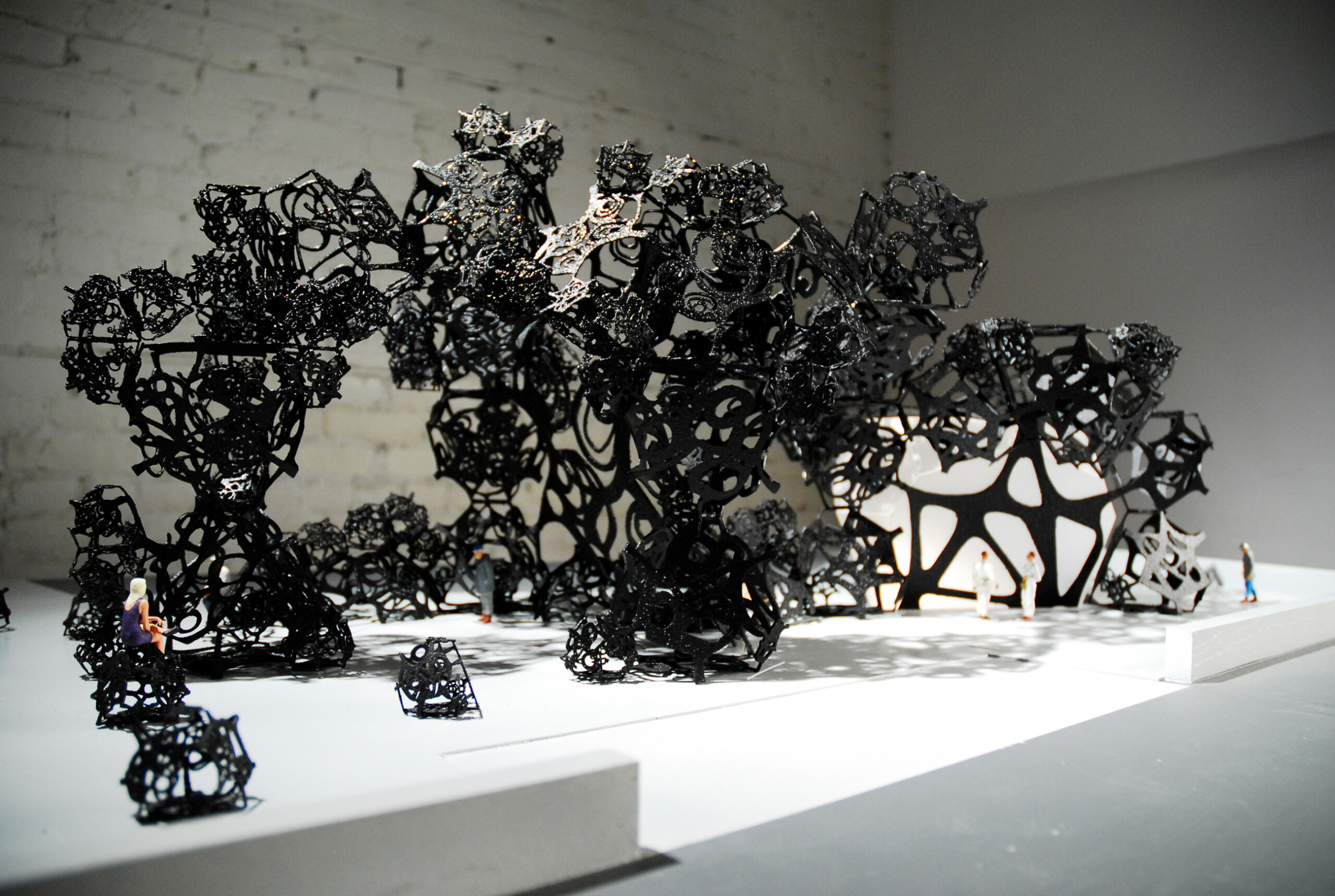

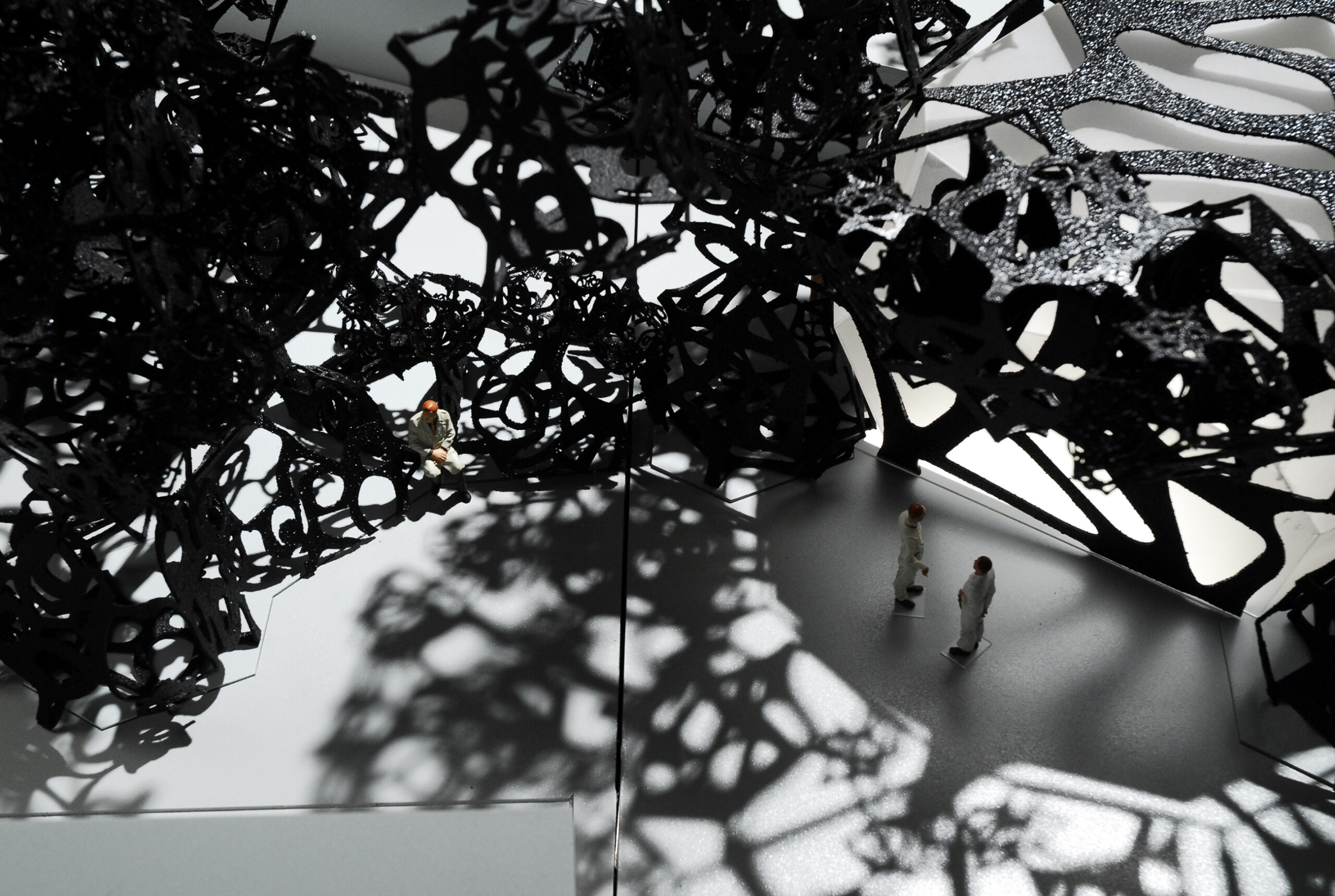



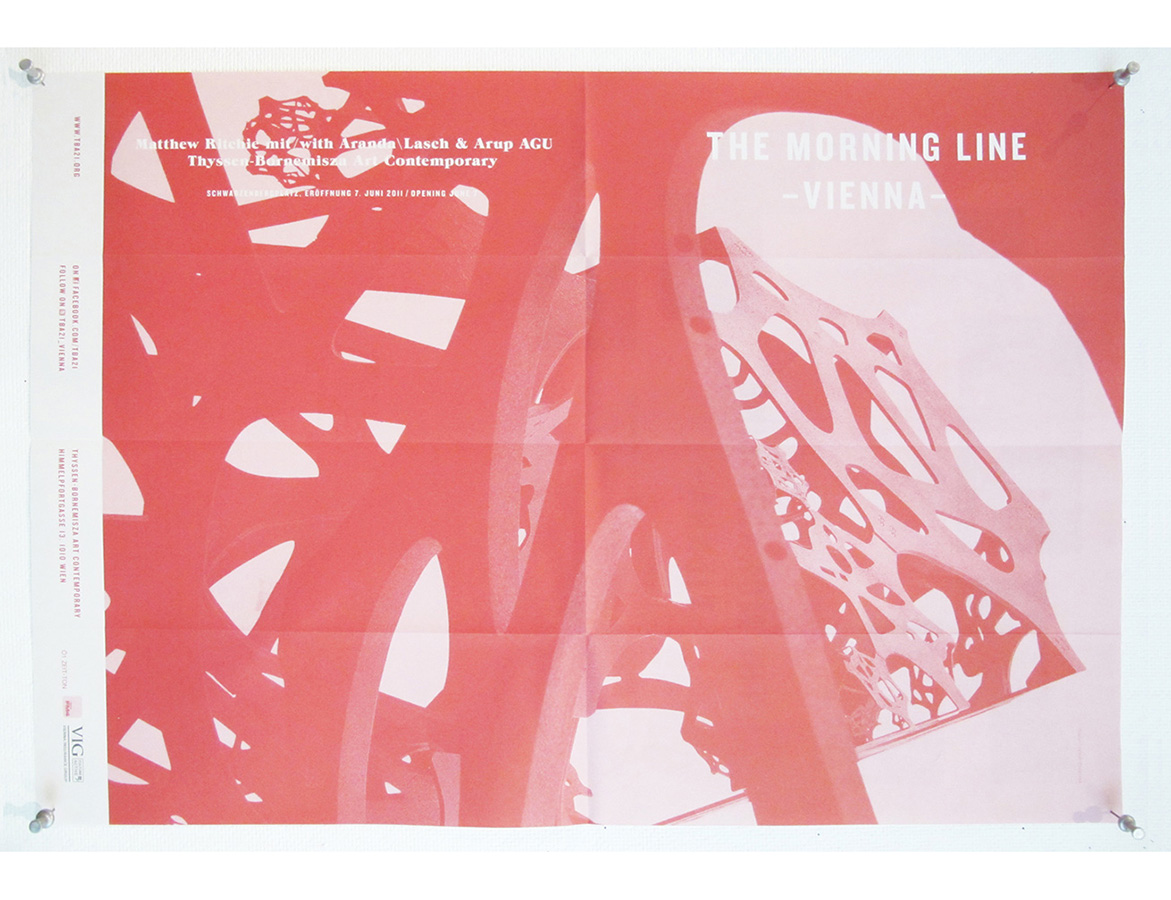


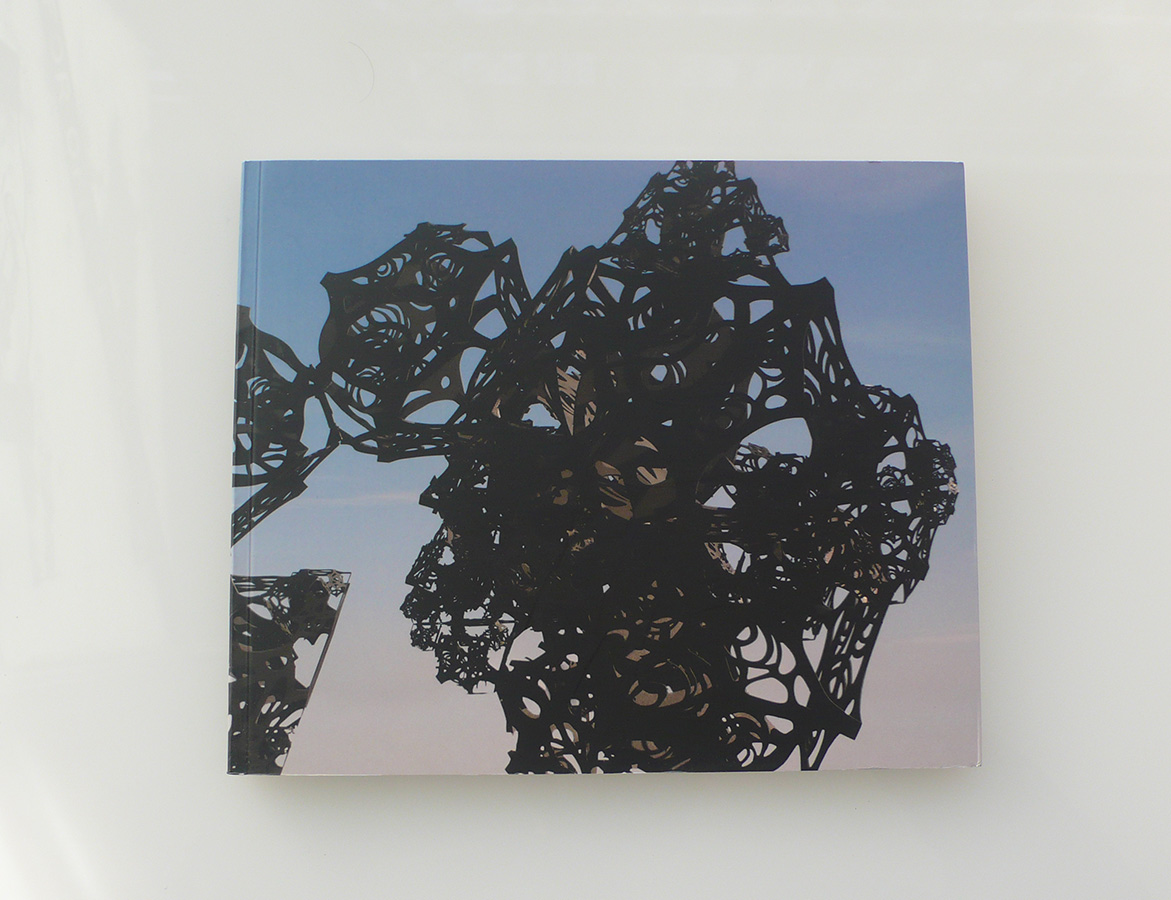
“In works like the (endless?) suite announced by The Morning Line, one may well glimpse not only an open world but perhaps a new way of working and thinking, one in which imagination and science, method and caprice, the sociocultural and the natural, are inseparable and no longer subject to the scolds and disciplinary distinctions that seek to protect the sanctity of artistic practice even if such protection will surely destroy art for good.”
-Sanford Kwinter



